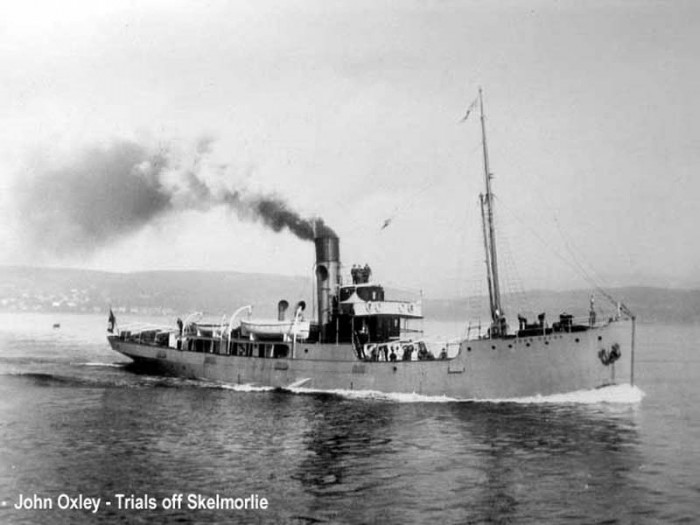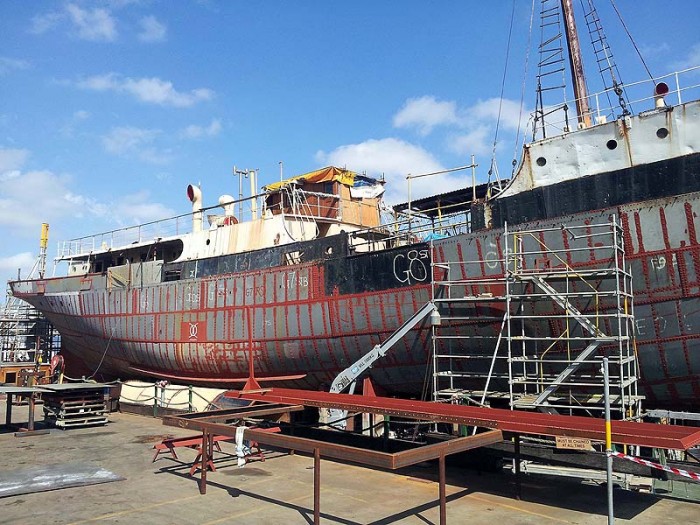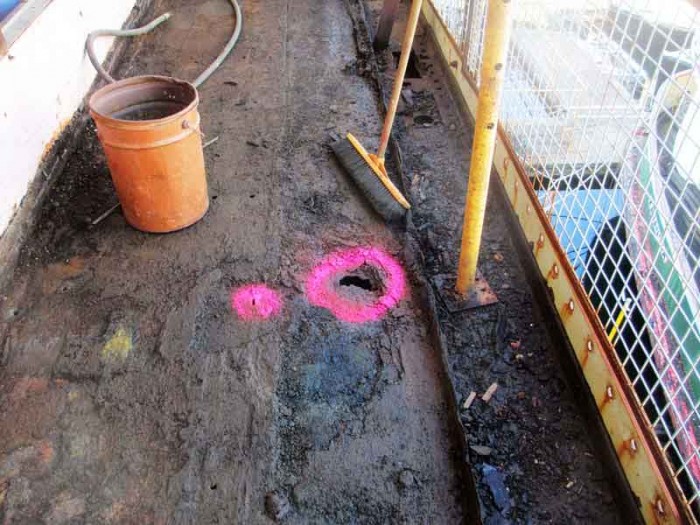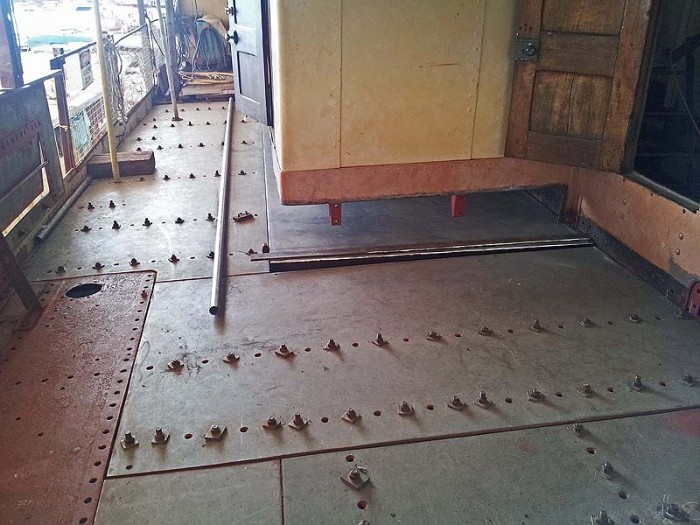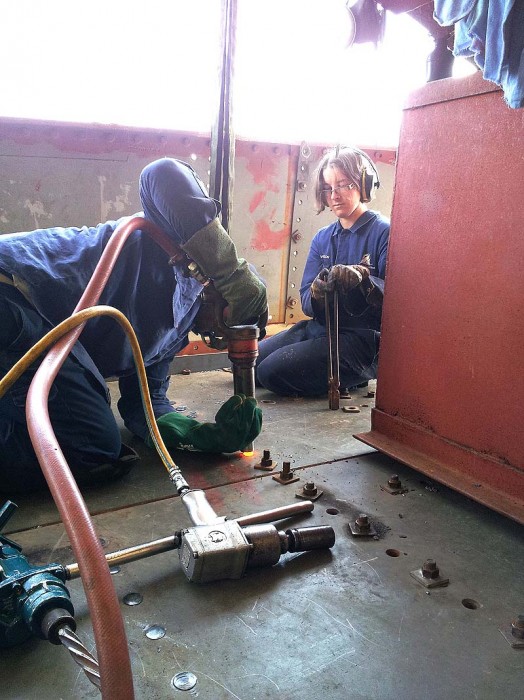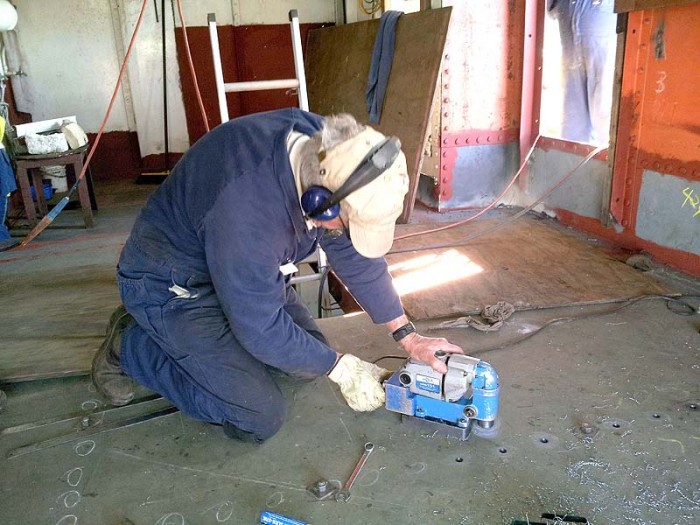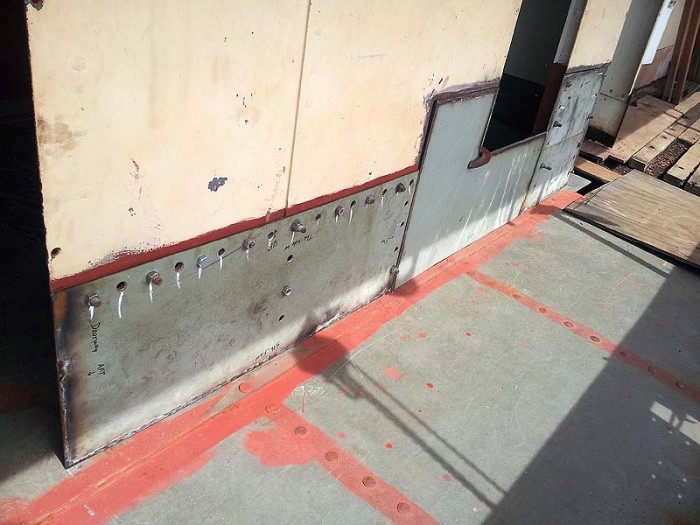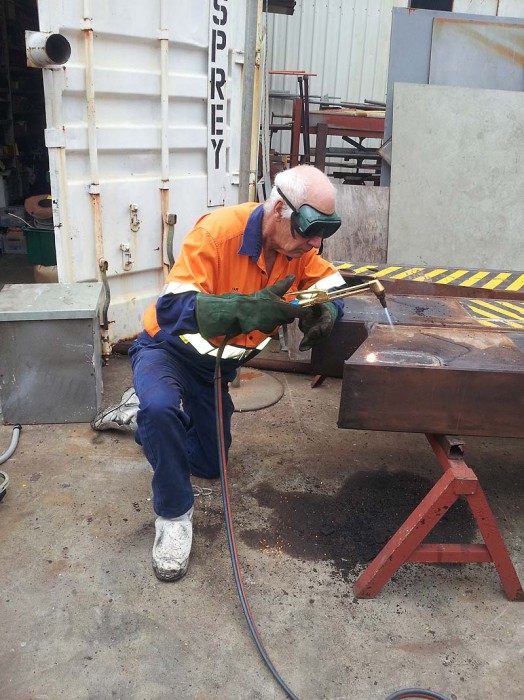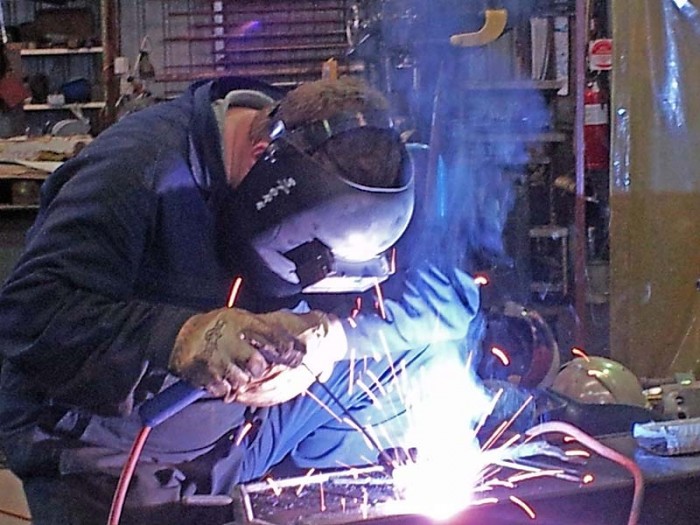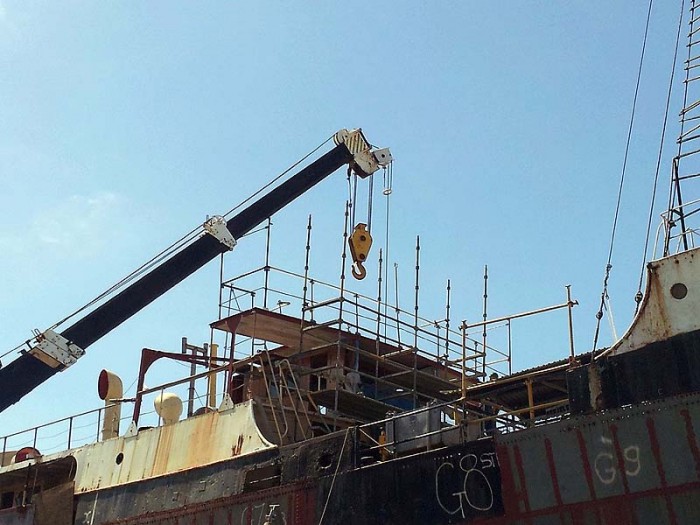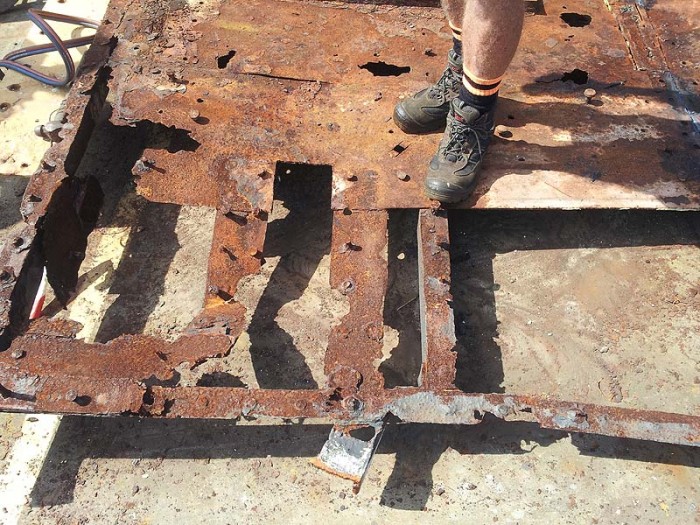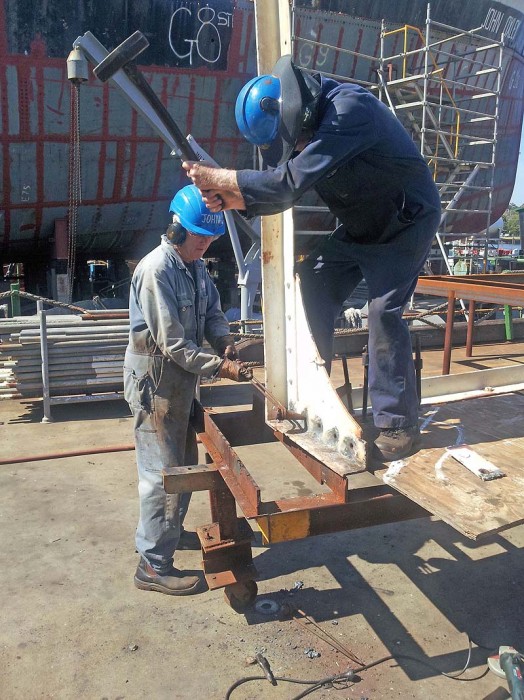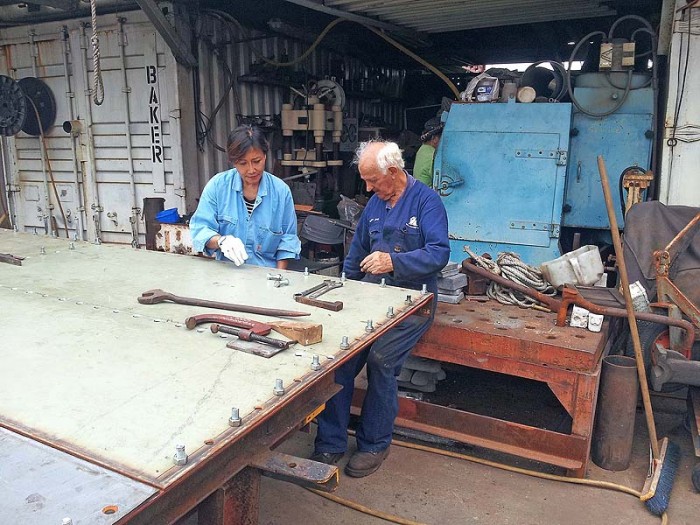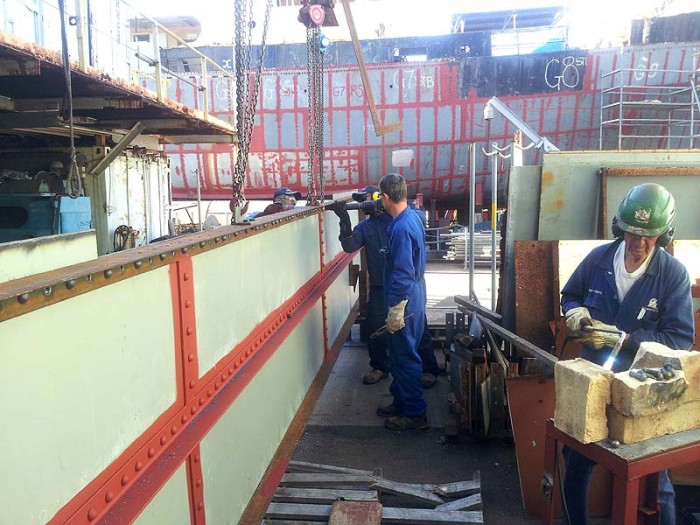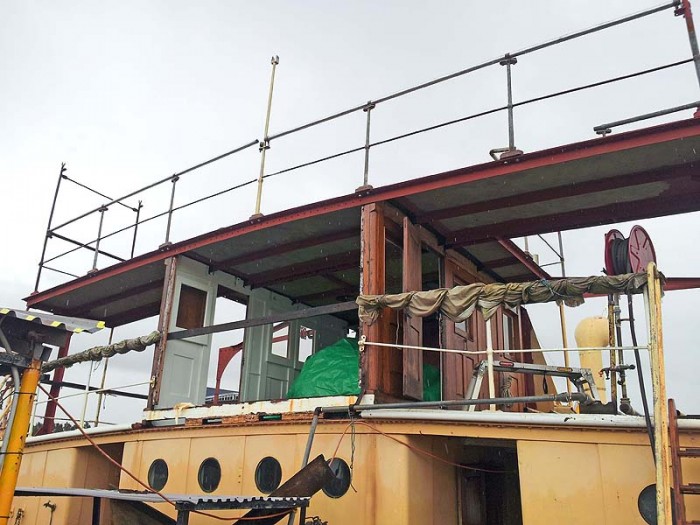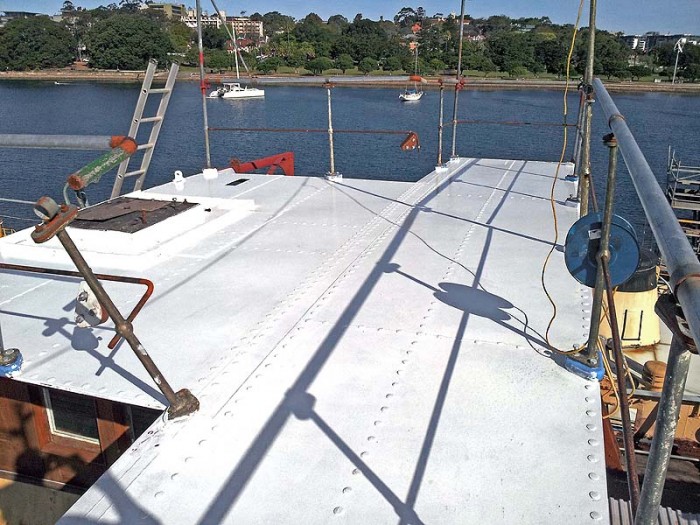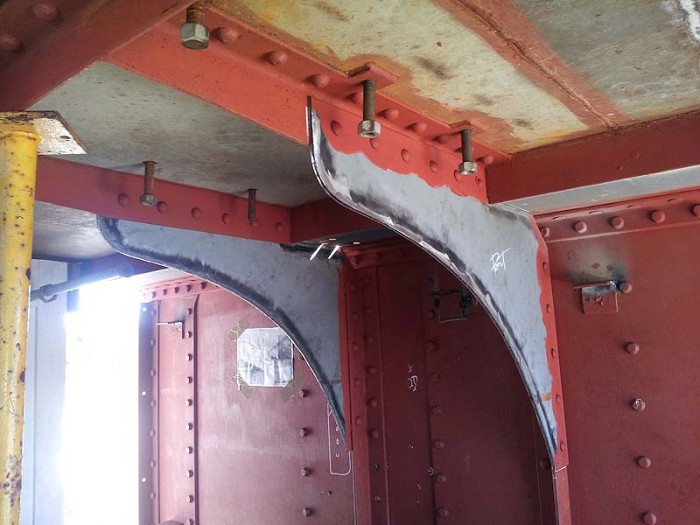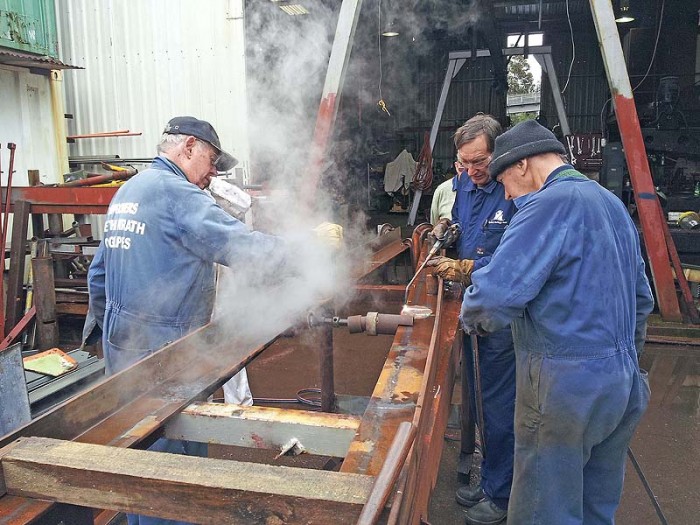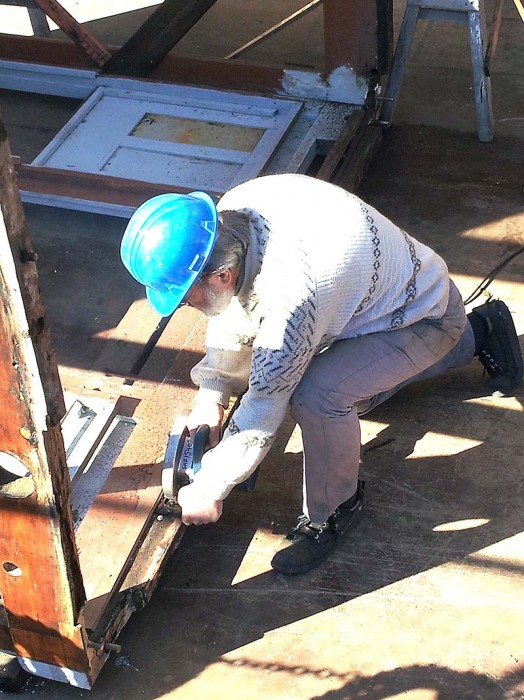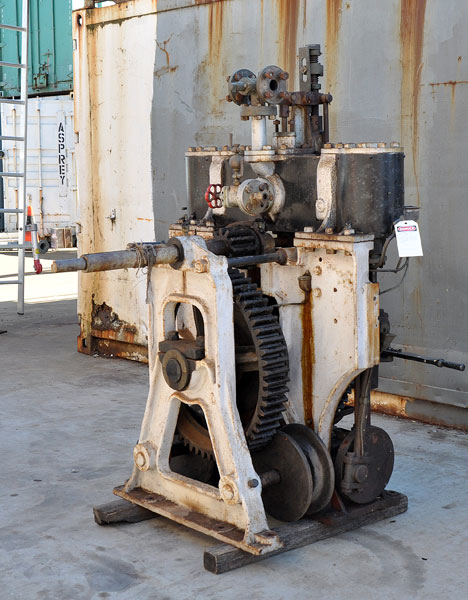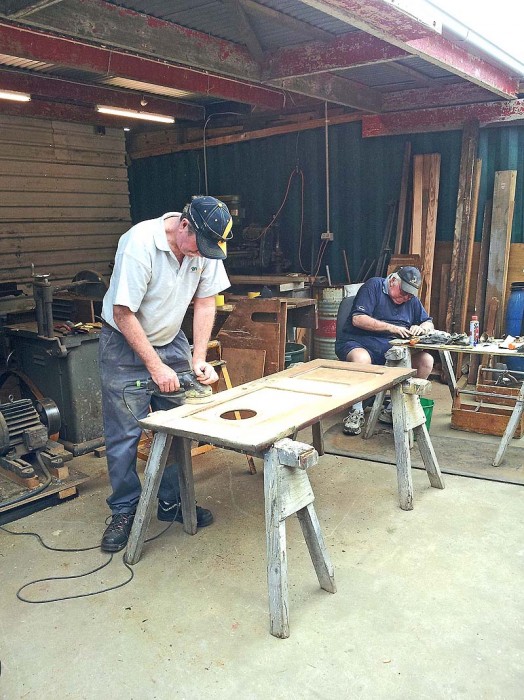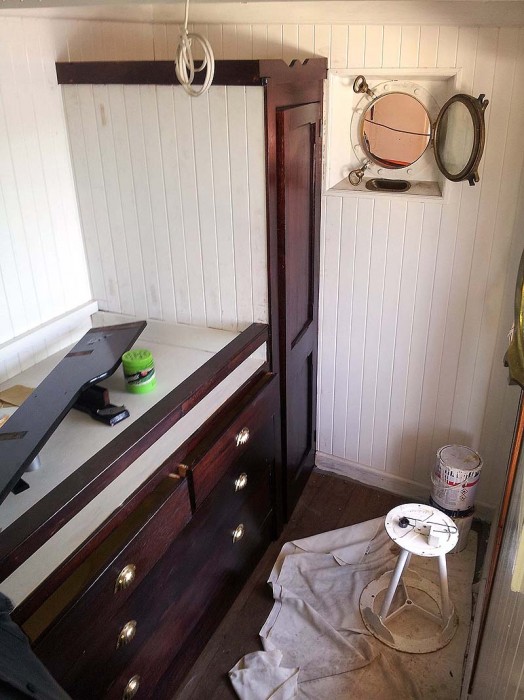John Oxley Restoration
Update December 2014
Sydney Heritage Fleet is a volunteer based non-profit organisation that continues its restoration of the last remaining coastal steamship in Australian waters.
John Oxley was built in Paisley, Scotland and steamed out to work in Australian waters for the next 40 years.
John Oxley was laid up for most of 1929, but original chief engineer Aub Binnie loved his old ship and regularly visited to look after the machinery. Aub’s old ship was to be scrapped, but a surprise bid from the Lady Hopetoun and Port Jackson Marine Steam Museum (now Sydney Heritage Fleet) saw this old ship donated for preservation rather than facing the scrapper’s torch.
After some intensive hard work by SHF members, John Oxley was able to be steamed from Brisbane to Sydney under her own power and with a crew of museum volunteers.
The fledgling museum then was able to steam this remarkable survivor from the age of steam for trips on Sydney Harbour and even undertook a number of trips to nearby ports of Newcastle and Jervis Bay.
In 1973 John Oxley was laid up because of concerns over thin hull plates. It would be 27 years before Sydney Heritage Fleet would be able to commence serious restoration on this iconic steamship.
Over these years; however, the SHF workforce worked to restore other SHF vessels, all the time rediscovering and practising the skills needed to rebuild John Oxley.
In 1997 the tired old hull of John Oxley was placed onto the Sea Heritage Dock, a purpose built barge that was constructed so that SHF vessels could be restored out of the water at a slower and more cost realistic pace.
Restoration officially commenced in 2002 when a few volunteers cut into the main hold of John Oxley.
The work has continued. 2014 has seen work focus on replacing the badly corroded main deck steel plates, rebuilding the bridge deck, internal linings and coatings plus the start of work on rebuilding the deck cabins.
The restoration would not be possible without the support of our workforce, whose efforts and skills in so many areas are driving this restoration forwards.
Thanks are also extended to our main sponsor and to our other supporters in industry who continue to support this project. This restoration is a long term project and we thank you for your continued support.
Opportunity for new volunteers!
Looking for worthwhile time to spend some free time? Seeking greater satisfaction, a place to add value and be appreciated?
Restoration of Australia’s only remaining coastal steamship continues, but our workforce is keen to pick up the pace, but not the pressure! This project needs volunteers with some special skills.
Main work days are Tuesdays, Thursdays and Saturdays. Orientations and mandatory inductions are provided.
A construction site safety certificate (White Card) is desired, but if you do not hold this qualification, training can be provided. As a bonus, an opportunity to work and socialise with like-minded people all working toward one goal. Sydney Heritage Fleet also offers many opportunities for volunteers to share in the wider life of the SHF community. –
Click here for more information
John Oxley delivery voyage logbook located
We are fortunate that the Queensland Harbours & Marine archived many important documents. We have obtained a scanned copy of the official Board of Trade logbook for John Oxley’s delivery voyage through Queensland Government archives. This provides a fascinating insight into the operation of our largest steamship C1927.
Link to the article on the John Oxley delivery voyage logbook
Work on John Oxley’s upper decks continues
Passers-by and visitors will note considerable changes to the appearance of John Oxley. There is no escaping the visible impact of recent work as funnel, wheelhouse and bridge deck were removed for restoration.
It will be some time before the bridge and funnel will go back up, but at least everyone will be very aware that very obvious work on more visible parts of our steamship is well underway.
Main deck above the engine room
Unfortunately, we usually find steel plates under wooden decks are usually badly rusted and total replacement is needed. On John Oxley, the hull team have repaired all of the main deck above the engine room. This work first required erection of scaffolding so that the team could cut away the old steel plates, repair some wasted deck beams, and then cut and fit new steel deck plates in place.
The new steel deck over the engine room is now complete. Next task was to paint out the engine room deckhead. Brackets for the original well glass engine room lights have been fitted.
Return of these spaces to the engineers is imminent. Planned work, following removal of the scaffolding for re-erection forward, is the return and reinstatement of feed pumps, fire and bilge pumps and other engine room auxiliaries.
Main deck aft
Work on the aft deck continues. Firstly the area is made safe and then the old rusted deck steel is cut away and replicated. New deck steel is provided already grit blasted and zinc primed. It must be cut to templates and fitted. Initial holes for rivets are drilled and tack bolts fitted.
Our small Hougen magnetic drills are of invaluable value to the project. Designed primarily for close quarters work in cramped industrial applications, we find these small magnetic base drills very useful. They do not use conventional drills, rather they use hollow cutters called Jet broaches.
Then riveting takes place, followed by welding of any seams. The deck is a structural element, so all welds must be full strength welds.
The coamings are also rust damaged through regular contact with sea water and rain. These have been repaired in the past, but the repairs now have full access as the timber deck is removed.
When the aft deck is complete, the area will be painted. The team can then commence work on deck restoration of the forward part of the vessel.
Interior linings and coatings
Prior to final completion of the aft deck, the aft void space and aft peak tanks need primers, then concrete linings and finally 2 pack coatings suitable for water tanks. Volunteer teams have been active needle gunning, descaling and clearing debris to allow best chance for new coating to do their job.
Similar coating work has also taken place in the engine room and forward holds.
Of historical interest were the original coatings. The builders applied bitumastic paints to bilge areas and conventional red lead primers and enamels to the upperworks.
The peak tanks at bow and stern were raw steel coated with cement linings, which would have been simply smeared on by hand by workers who climbed down through manholes into the tank compartments. During bow plating repairs, we found stubs of wax candles melted onto steelwork inside the peak tanks, a very basic form of confined space lighting.
Apprentice training
Andrew has joined the project this year as a metal fabricator apprentice and we welcome him warmly. Andrew joins our projects via group scheme organisers MEGT. We have worked with MEGT before and look forward to continuing our relationship over future years.
Apprentices have been vital to the restoration of John Oxley and there are now quite a few skilful tradies in the community who gained their qualifications from this project. We are pleased to advertise that our project has a 100% success rate in John Oxley’s apprentices finishing their time and becoming skilled and qualified tradies.
Our budgets are tight and employment of an apprentice from the current budget is simply not possible, so we are pleased to report apprentice sponsorship via a foundation with topup from one of our governors. For this we are very grateful.
Tadano crane recertified!
Our Tadano crane is invaluable to our project and is regularly used to lift heavy materials like steel, scaffolding and steam engines up onto the main deck of John Oxley. We also use this valuable tool for many activities such as installing diesel engines and lifting masts on SHF vessels.
But late 2013 we knew mechanical recertification was due. This was a daunting task as the crane was located on the waterfront and we knew there would be corrosion!
Operations Manager Tim certainly demonstrated faith as he led the recertification process. Volunteers dismantled the outrigger legs to repair rusted feet and legs. Both heavy lift and whip hooks were dismantled and overhauled. The diesel engine was also serviced by our engineers while our electricians have overhauled control electrics for the engine and the double blocking (safety systems for lifts).
Technically the crane was only on long-term loan from neighbours Australian Wharf and Bridge. It was intended to transfer ownership at the same time as re-certification so we are pleased to report that SHF is now the proud owner of this very useful Tadano crane with its freshly printed and laminated certificate to operate.
The announcement to our lunchroom crowd that our crane had passed all tests and was now owned by SHF was greeted with a hearty cheer and round of applause. Well done to all!
Fabrication – Bridge deck replacement
Images show the badly rusted steel structures of the bridge deck. Some angles were badly deteriorated and some sections had rusted away completely.
The old deck when craned down had lost a lot of metal through rust, but it was just under the lift limit for our crane. The design of a replacement deck with new steel therefore needed to be in 2 parts so that our crane could handle the lift.
Steel was bought in and a build frame erected. Angles were cut and steel plates riveted in place. To avoid our people working at heights, it was planned to do all the stanchion work while the bridge deck remained on the wharf. The stanchions were in good condition but railings needed an overhaul. Some of the stanchions were brass, possibly due to magnetic proximity to the compass, however this is hotch-potch and there is a mixture of brass and steel here.
The old rails also were mixed steel rod and brass tube. The brass tube was very weak and it was decided to remake new rails in steel for safety and strength and sort out compass issues later.
Late 2014, and with the crane back in action, the replacement bridge deck was lifted back up into place.
Main hold deck beams
The workshop team has undertaken the difficult task of manufacturing these beams. The original bulb angle section is no longer available in this country so the section must be fabricated from angle to which a round bar is welded. Heat setting the beams to a 8 inch deck camber was an ambitious undertaking and some warping took place, however, after some fine tuning with a 50 ton portable press, the new deck beams are ready for fitting back into the ship.
Wheelhouse, chartroom and master’s cabin
The wheelhouse has been removed from the bridge deck and placed on the Sea Heritage Dock for repairs. This structure is completely built in teak but unfortunately contains many steel fastenings that had actively rust expanded and damaged the wheelhouse timbers. They are gradually being removed and will replaced in an alternative metal that will not rust.
When the wheelhouse is complete, it can be craned back up onto its new deck, knowing that the new steel deck beneath will not leak water (or steering engine oil).
Historical note – The undersides of the steering engine holding down bolts used to leak oil and water into the Master’s cabin, so these were seal welded. This will need to be a consideration for the new wheelhouse deck.
John Oxley’s masters also used to ask that while they were trying to sleep below, the steering be switched from steam to the quieter hand steering with the large wheel.
Steam steering engine
A 2014 task was the dismantling, cleaning and overhauling the Bow McLachlan steering engine. The John Oxley’s builders were making steering engines before they were shipbuilders and were a supplier of steering engines to all manner of naval and mercantile vessels. The steering engine fitted to John Oxley is a fine example of this type of engine and has been much admired by the John Oxley team and by visitors.
When removed, the engine could still run and was oiled up and tested on compressed air.
Dismantling could then commence and the engine was stripped down to the last nut and bolt. Fortunately most of the issues were cosmetic and the engine has now been largely reassembled and has been test run in the workshop.
The steering engine will be returned to its beds when bridge deck and wheelhouse repairs are completed.
Engineer’s cabins – portside
With the steelwork in the engineer’s cabins portside completed, a new work crew has commenced the timber fitout for these spaces. The cabins are located over and close by the engine room so that the engineers are close to their realm. Fitout of cabins is new work for the project and this space will be used as a standard for the rest of the cabin fit-outs on board.
The cabins have a timber planks over the new steel deck. The bulkheads are mainly riveted steel plates, but then lined with tongue and groove boards set vertical. A new teak plank deck has also been fitted.
The old bunk frames and cupboards were originally not well made plus there were the patchups after a cabin fire. The decision was made to remanufacture and this work is almost complete.
Hobbs shed and parking problems
Mid 2014 we were informed that all SHF gear stored in what we call Hobbs shed had to be cleared to allow landlords RMS to station lane changing trucks and a workshop at the site we were using for storage and volunteer parking. This was a real blow, however, our people have rallied to the cause and undertaken firstly an extensive evaluation and then a cull of equipment, materials and artefacts stored on this site.
A considerable amount of John Oxley gear is stored on this site. Much of it has been put into 2 old containers while heavy and bulky gear such as anchors, main hold ladders and boiler uptakes has been relocated back to the main site.
We relied heavily on this site for close-by volunteer parking. We feared loss of this parking would reduce volunteer numbers, however, we are pleased to report our people have adapted by parking in nearby streets and walking in. Others have chosen to travel in by public transport. We remain grateful for the patience shown by our people and hope we can provide limited parking in a revamped car park in 2015.
PROJECT BENEFITS
Preserving our nation’s maritime heritage
The basic purpose – value to the community through conserving maritime treasures and keeping alive the skills needed to restore, operate and maintain our maritime heritage.
Volunteering
The project provides an opportunity for people to learn new skills and to use existing ones. It is also an opportunity for social contact plus the forming of friendships between people on the same wavelength. The project is enjoyable to attend without the commercial pressure of people’s normal work environment. The volunteer workforce is physically active and mentally on the go. It’s not just for the men, as we also have many ladies volunteering on our projects.
We are seeking volunteers with welding and fabrication skills and those who like to paint.
For those who feel they lack technical skills, we train in Work Health and Safety, WHS, and can then bring you up to speed with a range of technical skills. You may be surprised to find out what you can learn and many volunteers report they take these skills back home as well.
Economical use of funds and material utilisation
All purchases are well researched and planned. Donations, sponsorships and discounts are sought. Nothing is wasted when materials are used – even remnants of steel plate are used to make pipe flanges and for training welders.
EQUIPMENT SOUGHT
Most SHF tooling and equipment is donated by industry because a workshop was updating or closing. This is great for us as heritage steamship technology does not need high tech equipment.
Generally, our donated machines feel quite at home.
The work team wish list
Drill press – #3 Morse taper
Horizontal borer – not too large! We are always needing to re-bore engine cylinders
Drills and bridge reamers for 5/8, 3/4 and 1 rivet work
Nuts and bolts – all sizes – especially inch sizes
Air hoses – about 25 mm for mains and smaller sizes for air tools
Seeking electric pumps
The pumps are needed soon as we are fabricating the piping systems. These pumps augment the steam pumps fitted to John Oxley.
|
PUMPS WANTED(NEEDED)
|
Can you help? |
